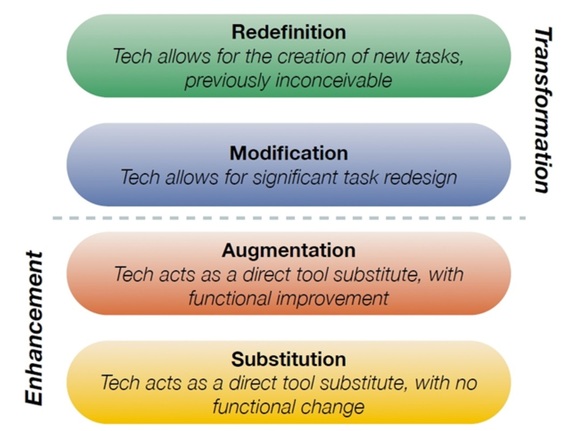Ever changing landscape
Understanding the role of technology in education is tough because it is always changing and and evolving. Students on a daily basis bring in new aspects of technology or pop culture into the classroom that the teacher has to work with. Students ideas are always changing and the teacher is always looking for the new idea/topic that will keep students engaged and motivated to explore. I believe technology helps bridge that gap but it is an on-going process.
Emerging themes in the of technology in the world is interesting because it is hard for us to know what’s going to happen before the concepts and trends fall into place. As we look we have to observe the trends that are happening right now. One that resonate with me and worries me is cyberbullying. The internet lets people make decisions without having direct repercussions of a physical person being right in front of you. Instead the victim is almost removed from the interaction and this could lead to ugly circumstances.
In the article (Landscape is changing), the authors recognize how technology is becoming an excellent medium to support students who need extra support and are creating ways to allow students to become more innovative and creative. Children are so talented at skills they are interested in and allowing them to explore and take risks in their learning through creativeness is a very positive step forward. Not all students have to write a paper to show their understanding of topics. Technology continues to support and create new opportunities for UDI (Universal Design Instruction) which explicitly helps students with their educational needs.
Another main point they highlighted, was the importance of how technology can play a role in connecting students with a larger support network. Communication with parents through email, FreshGrade and other communication platforms can be an excellent situation. If parents can take more responsibility where their child needs support, I believe it could make a very large positive impact for the child.
(TPACK) Knowledge Pedagogical Content Knowledge
In the article, I appreciate that they recognize that technology is so dynamic and always changing that it brings on challenges for the teachers involved. Technology forces teachers to always be up to date and understanding the nuances of programs and ability to successfully interact with the technology. That paired with a busy schedule, life and learning new and wonderful technologies might be challenging for many people.

The relationship is content, pedagogy and technology. The TPACK model is set up as a type of Venn diagram that does not promote linear types of integration but aspects can be used separately.
I feel that TPACK model is good because it relies heavily on things that teachers should be proficient in already. For example, the CK (Content knowledge) section should be the same for a teacher either way. As a teacher, you know the information you are teaching whether it be history or math. Without adequate understanding of the content you are setting your students up for creating misconceptions and misunderstanding.
PK(pedagogical knowledge) in my mind is where you see the master teachers shine. If a teacher is confident in their style of teaching and understands how students learn then that is a recipe for success. It takes a long time and energy to master these skills.
As the authors refer to the TK (technology knowledge) always to be in flux, due to the changing nature of technology. The other sections stay much more rigid while technology is always evolving and influencing other parts of your practice.
I found the history of how TCK has impacted so many fields. The idea that computers and computing power has changed how people look at and study mathematics and science is just enormous. The power of looking at massive amount data that can be collected that humans could never do and to look at trends in that data is extraordinary. It has led to many conclusions about information and trends that we would never have the ability to understand. Similarly, technology has impacted education and effects are still in their infancy. As technology contiues to play an integral role in education I believe that many new ideas and concepts will come forward that we have not seen before.
SAMR (Framework for evaluating mLearning)
The main question that arises for me in the article is how can mobile devices support learning in schools. The main word in this sentence is support. In my experience, students still are viewing mobile devices as a novel item that sometimes tends to distract more than enhance learning. In teaching some middle school but mostly elementary children the idea of mobile learning is interesting. The smaller children view technology as a medium to play games on instead of a tool to enhance their learning. I do not blame them! Technology has not been prevalent enough in their lives to look away from just the entertaining side of technology and understanding and utilizing the benefits that technology can bring to their learning.

Source: https://www.schrockguide.net/samr.html
Personalization, Situated and connected define mLearning.
As far as education goes, I believe that mLearning has tons of potential. In many districts they are working hard to get a 1:1 ratio of technology into students’ hands. Especially in higher grades students already possess this through smartphones and/or tablets.
I appreciated the notion that we are living in an information age. Students have access to so much information that they can go off by themselves and learn pretty much any skill or specific information they like. Where does this leave teachers?
I think we are starting to see the change happen through our curriculum. The curriculum is aiming at students learning processes rather than specific items that we need to memorize. There is no point anymore. Students can look up any information they need in a blink of an eye. What teachers need to start doing is understanding the processes we need to teach students so they can fully utilize the powers of the internet and its endless information.
It was interesting how the article pointed out how a piece of technology is so tightly connected to your identity. I think it is true and this leaves opportunity to fine tune students mobile devices to better suit their needs in the classroom.

Photo by Feliphe Schiarolli on Unsplash
Which one is better for my practice. I have used the SAMR model on a more regular basis because it seems fairly straightforward to how teachers integrate technology in their classrooms. We learn about new apps or programs and substitute them out for new ways for the students to complete their work. I believe that there are many situations that the SAMR is not the right way to go but does offer opportunities for teachers to integrate technology into their class in a forward manner.
I believe that TPACK is a more intentional manner of incorporating technology into the classroom. As a teacher, you have to reflect on what type of technology will best suit the content you are delivering. Next, how does my pedagogy impact how technology will be used and how do I want to format my lesson to suite my style of teaching.
I think that both have their advantages and disadvantages but being aware of both and actively thinking about how to incorporate these practices into your teaching is positive. Reflecting on your practice and how we can improve as teachers leads to better teaching practices. Onwards and forwards!

Photo by Gaelle Marcel on Unsplash
Trends from two decades of scholarship
It is great to see that more research is going into studying the impacts and implications of online learning. The more information we can possess can create the opportunity for best practice. Information is power when it comes to how learning is affecting students and their learning.
It also seems that online learning is becoming commonplace in schools so it makes sense that research is following. The articles pointed out that most of the research has been completed in the past few years. This has a couple implications. First, with the research being current we have the opportunity to understand what the context it is. With older research it is sometimes hard to filter through the ongoing social contexts that arise in the articles. It seems the research is much more clear and reliable when it is current. Second, it creates a culture of following and using the research appropriately. It also gives hope that even more research will follow to further our practices as teachers.
I do not love that the majority of research has been theoretical. I would prefer more research done on the practical side of the equation. As a practicing teacher, I seem to connect much more passionately about the practical side of things when it comes to research. At the same time, I feel that the practical side of research can only come after the theoretical component is in place. The theoretical side of things seems to be the backbone that the practical side is supported by.
I found it interesting that there seems to be a bunch of articles from the same authors. One one side, it makes complete sense that certain researchers dig deep into their research topic and study things involved in that general area. On the other hand, it is important that all the research is held by a few people. Diversity in the way researchers think and complete studies is essential in painting and understanding the full picture of what is going on in technology and education. We do not want misinformation or basis influencing results of studies.
Another interesting point that stuck with me is the push for mobile devices being used in collaboration between learners. I think this should a direction I need to go with my practice. I always hated crowding around a computer in school and working very inefficiently towards a goal. Now with things such as Google Docs it allows students to work on their own work but collect it and show it in a much more efficient manner. It allows for students to be more responsible for their work as well. Accountability is at a higher standard because teachers can track what students have done. I would like to use this in my classes more. Even for the young graders.
There are so many other ways to collaborate as well. Not just with other teachers either. Another excellent benefit that I have done a couple times is bringing the students to the experts and immersing the students into the environment that they are studying. I have done a unit on mountains and have skyped a mountain guide in the mountains and while he answered questions. It was amazing! I have also done virtual field trips to New York and San Francisco. This allows students who do have the ability to go to these locations the opportunity to experience them in a fairly authentic way. It gets the students to buy in further and motivates them to stay engaged.

Photo by John Rodenn Castillo on Unsplash
There are so many opportunities that are arising from mobile learning and I hope to keep on integrating them into my classroom. The journey continues.
Featured Picture: Photo by Bailey Zindel on Unsplash
References
Koehler, M. & Mishra, P. (2009). What is Technological Pedagogical Content Knowledge (TPACK)?. Contemporary Issues in Technology and Teacher Education, 9(1), 60-70. Waynesville, NC USA: Society for Information Technology & Teacher Education. https://www.learntechlib.org/primary/p/29544/.
Romrell, D., Kidder, L.C., Wood, E. (2014).The SAMR model as a framework for evaluating mLearning. Online Learning Journal, 18(2).https://files.eric.ed.gov/fulltext/EJ1036281.pdf
Hamilton, E.R., Rosenberg, J.M. & Akcaoglu, M. (2016). The Substitution Augmentation Modification Redefinition (SAMR) Model: a Critical Review and Suggestions for its Use.
Qing-Ke Fu, Q-K., & Hwang, G-J. (2018). Trends in mobile technology-supported collaborative learning: A systematic review of journal publications from 2007 to 2016. Computers & Education, 119, pp. 129-143, https://doi.org/10.1016/j.compedu.2018.01.004.
Arnesen, K.T., Hveem, J., Short, C.R. West, R.E. & Barbour, M.K. (2019) K-12 online learning journal articles: trends from two decades of scholarship, Distance Education, 40(1), 32-53, https://DOI: 10.1080/01587919.2018.1553566

Leave a Reply